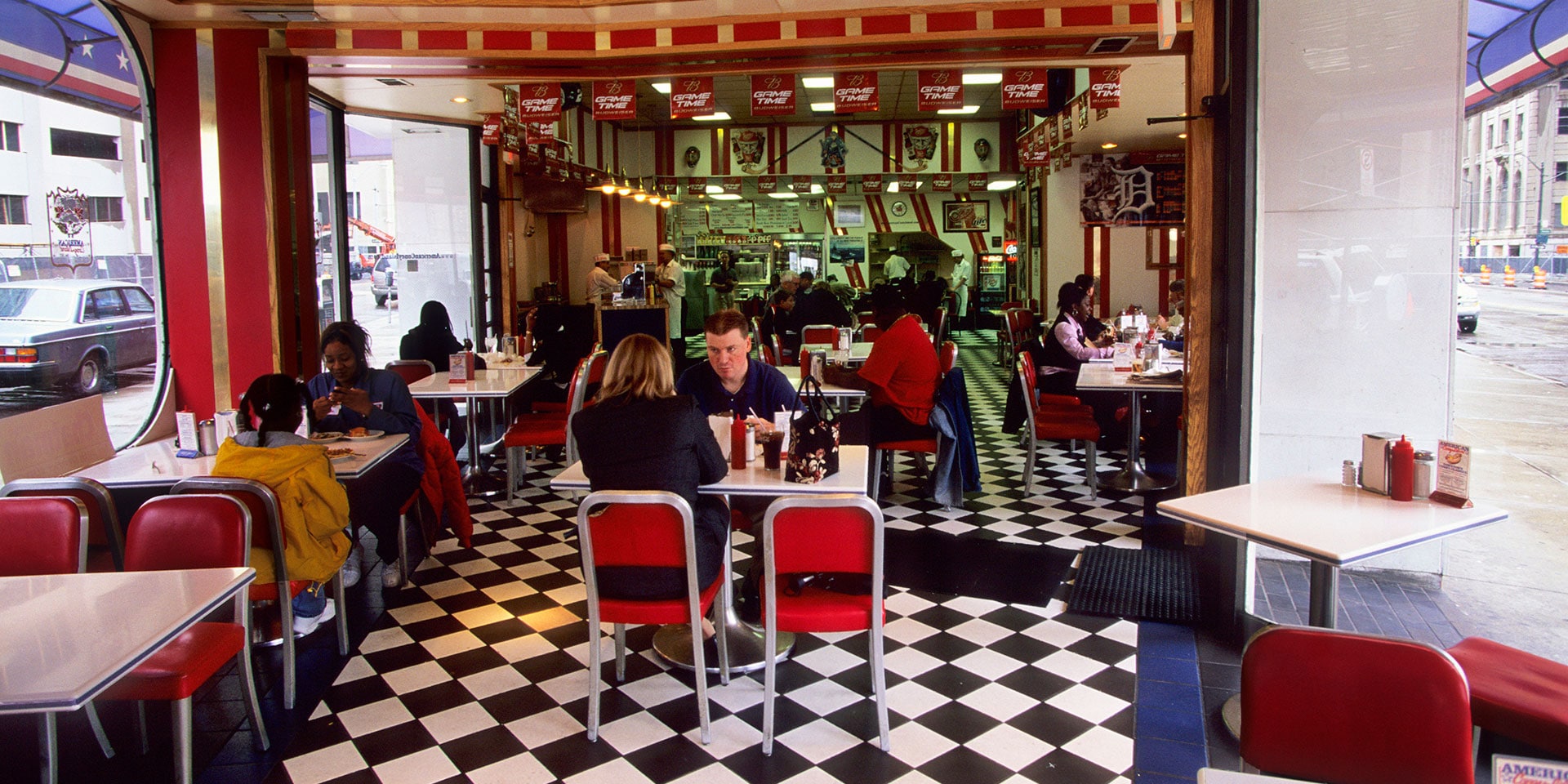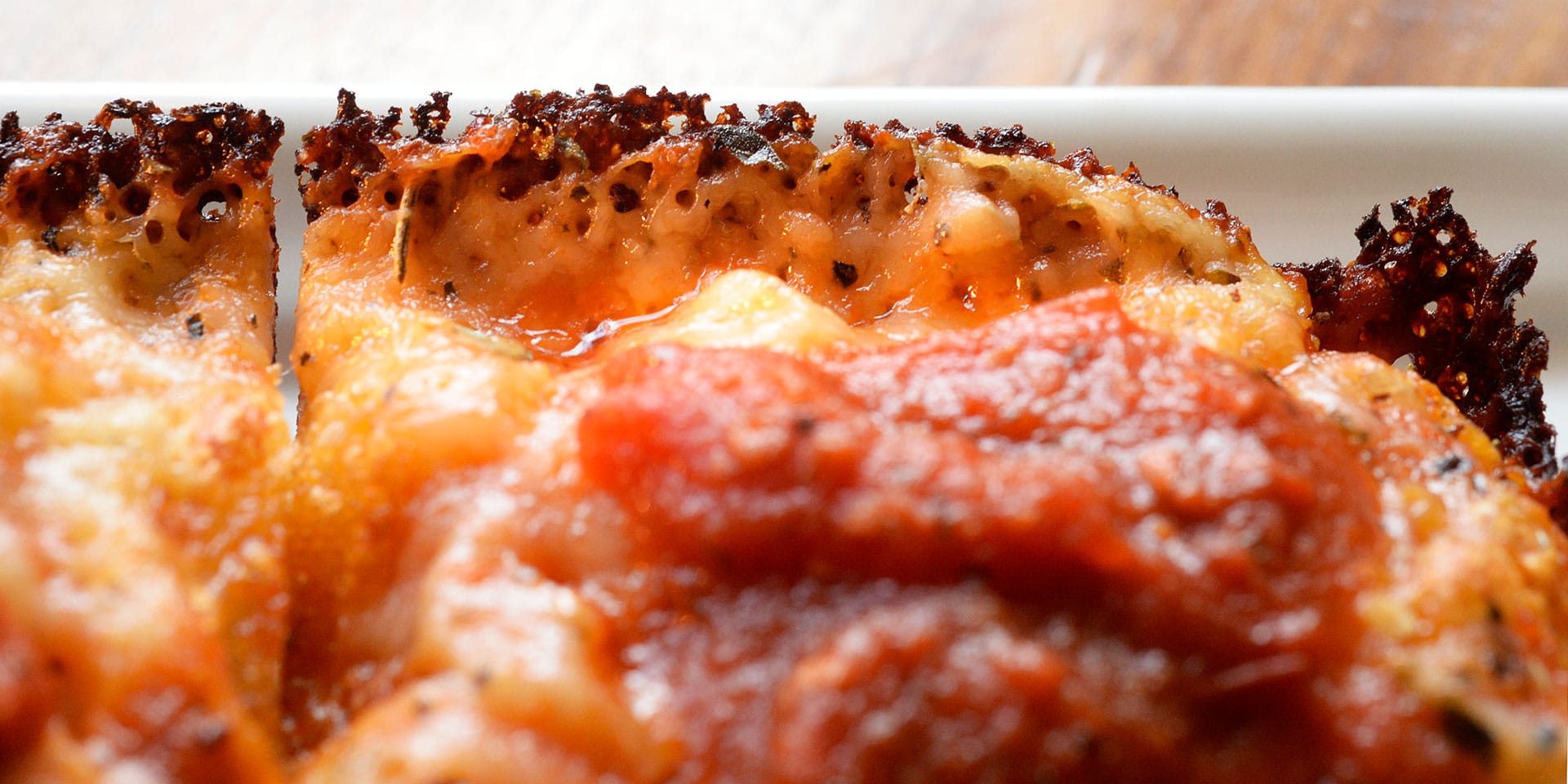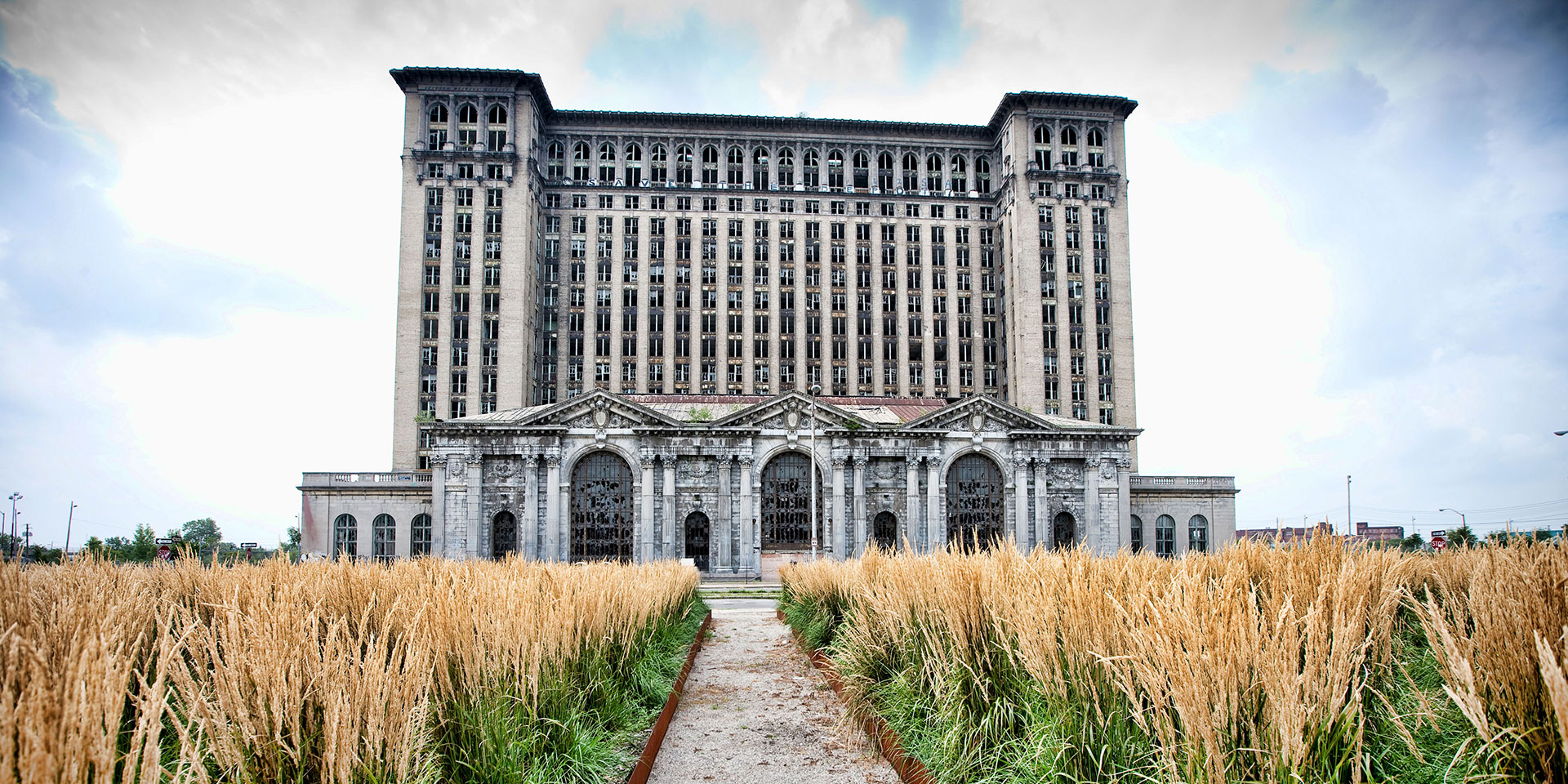
Order the “Coney Dog,” at American Coney Island in Detroit. (Photo: Getty Images)
DetroitHungry in the Motor City? Here’s Where to Dig Into 5 Must-Try Detroit Foods
By Samantha LandePhilly has its cheesesteak, the Windy City claims a Chicago-style hot dog, and New York calls dibs on the best bagels — but that doesn’t phase anyone in Detroit. The Motor City is home to more than just cars; it’s also known for dishing up plenty of tasty, unique-to-Detroit foods.
Some of the city’s cuisine garners national attention, while other foods remain hometown favorites. Here are five authentic Detroit foods to place on your must-eat list.
Coney Dog
It’s undetermined if this cult-favorite chili dog actually has ties to the birthplace of the hot dog: Coney Island, New York. It’s possible that immigrants passing through Ellis Island borrowed the name of the famous amusement park when referring to this Detroit favorite.
What we do know is that the Coney Dog dates back to as early as 1917, when Greek immigrants opened a bunch of quick-serve diners across Michigan, called “Coney Islands,” and started serving the hot dog.
Detroit’s Coney Dog consists of a hot dog on a bun slathered with beanless chili, yellow mustard and raw onions. There is a battle between the two most famous vendors, next-door neighbors Lafayette Coney Island and American Coney Island, as to who makes the most authentic Coney. The differences are apparent to Coney connoisseurs, who hold strong opinions on the treasured food.
Detroit-Style Pizza

Recently this Sicilian-style pizza started popping up in cities as far-flung as New York and Denver, but it’s been a Detroit original since 1946 when it premiered at Buddy’s — now Buddy’s Pizza — a neighborhood tavern.
What sets Buddy’s pizza apart is, well, just about everything. The pie crust is square with a thick-yet-airy texture. Pizzas are cooked in blue steel pans that once stored auto parts. The pan causes a crisp caramelization between the cheese and the crust.
Speaking of cheese, Wisconsin brick cheese is most authentic to Detroit-style pies and is what you’ll find used at the city’s pizzerias. Top that with a drizzle of red sauce and you have Detroit’s very own pizza.
Boston Cooler
Despite its name, this drink has no relation to Boston, Massachusetts; rather, it’s named after Boston Boulevard, a street in Detroit. The Cooler consists of Vernors, a ginger ale originally produced in Detroit, and vanilla ice cream.
Depending on where you order the Boston cooler, it may have the consistency of a float or a milkshake, but the tangy ginger ale balances out the sweetness of the vanilla ice cream, making it a hometown favorite.
Head to Strohs Ice Cream Parlor, a Detroit original, or Ray’s Ice Cream (known for its made-in-Michigan flavors) to give the Cooler a try.
Zip Sauce
In 1930s Detroit, an Italian steakhouse called Lelli’s Inn started serving steak with something called “zip sauce,” a unique sauce rumored to contain butter, au jus and a mix of spices. The sauce, which adds a poignant richness to the steak, is poured over the meat and typically gets soaked up by surrounding potatoes or veggies.
The original location burned down, but Lelli’s still dishes up the steak and sauce at its current location in Auburn Hills, outside the city.
It caught on quickly with Italian steakhouses and is now served at a number of them in Detroit and the surrounding areas, including Mario’s in downtown Detroit.
Double-Baked Rye Bread
Kosher-style delis are found across the country, but very few outside of the Detroit area use double-baked rye bread. The baking process was devised in the 1950s by Jack Goldberg, who opened Stage & Co. in Detroit (now Stage Deli in West Bloomfield) in order to keep rye breads hot when they were served.
He started baking them until they were 80-percent done and then finished them with a 20-minute second round of baking before the deli’s lunch rush began. The result? A warm, thick rye bread that held up (and still does) to the mounds of corned beef typically piled on top.







